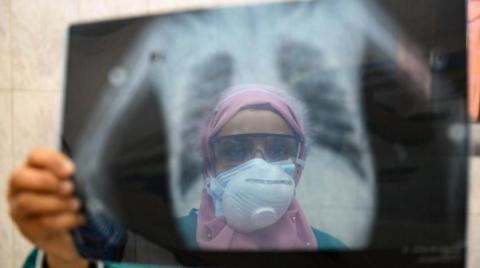
More than 80% of people who tested positive in a national coronavirus survey had none of the core symptoms of the disease the day they took the test, scientists say.
The finding has prompted fears that future Covid-19 outbreaks will be hard to control without more widespread testing in the community to pick up “silent transmission”, particularly in universities and high-risk workplaces such as meat processing facilities.
Researchers at UCL said 86.1% of infected people picked up by the Office of National Statistics Covid-19 survey between April and June had none of the main symptoms of the illness, namely a cough, or a fever, or a loss of taste or smell the day they had the test.
Three quarters who tested positive had no notable symptoms at all, the scientists found when they checked whether people reported other ailments such as fatigue and breathlessness on the day of testing.
Unlike coronavirus testing in the community which focuses on people with symptoms, the ONS infection survey routinely tests tens of thousands of households around the country whether the occupants have symptoms or not.
“At the moment, the focus is on people who have symptoms, but if you are not catching all those who are asymptomatic or presymptomatic it may be really difficult to get outbreaks down in time, before they get out of control,” said Irene Petersen, an author on the study and professor of epidemiology and health informatics.
While those who tested positive in the ONS survey may have gone on to develop a fever, cough or other common symptoms, Petersen believes there is a risk of “silent transmission” by people who are unaware they are infected.
The study, reported in Clinical Epidemiology, analysed the symptoms described by more than 36,000 people who were tested between April and June. Only 115 tests came back positive and of those only 27 people, or 23.5%, had symptoms of any description.
When the scientists narrowed the symptoms down to the main three for coronavirus infections, namely a cough, or a fever, or a loss of taste or smell, the number reporting the ailments fell to 16 or 13.9%.
On the back of the findings, Petersen argues that universities and high-risk work places, such as meat processing facilities, should do regular testing to pick up people who may be infectious but are not displaying symptoms. She urged universities to ramp up testing capacity now so students could be tested through the autumn and crucially before they return home at Christmas. “Anybody who’s had students coming home at Christmas knows they often bring some sort of bug with them and this Christmas in particular they could bring Covid home and potentially seed new outbreaks,” she said.
Last month, the government’s Scientific Advisory Group for Emergencies (Sage) issued a similar warning, stating there was a “critical risk” of large numbers of infected students sparking outbreaks across the country when they returned home at the end of the term.
Given the pressure on testing capacity, Petersen said pooled testing was needed, where swabs are grouped together and tested as one batch. Since most people do not have the virus, most pooled tests will be negative, but when a batch tests positive, the contributors need to be tested individually to identify the infected person.
Patrick Maxwell, head of the school of clinical medicine at Cambridge, said the study underscored that many people who are infected are asymptomatic. “There will be great public health benefit in terms of reducing transmission if we can reliably identify asymptomatic individuals and they then self-isolate,” he said.
He said Cambridge was piloting an approach that uses pooled samples to enable a “mass asymptomatic testing programme” for students.












